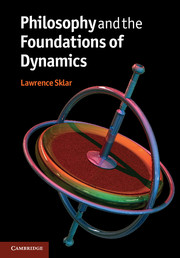Book contents
- Frontmatter
- Contents
- Chapter 1 Introduction
- Chapter 2 The pre-history of classical dynamics
- Chapter 3 The astronomical revolution
- Chapter 4 Precursors to Newtonian dynamics
- Chapter 5 The Newtonian synthesis
- Chapter 6 Philosophical aspects of the Newtonian synthesis
- Chapter 7 The history of statics
- Chapter 8 The development of dynamics after Newton
- Chapter 9 The “Newtonian” approach after Newton
- Chapter 10 From virtual work to Lagrange's equation
- Chapter 11 Extremal principles
- Chapter 12 Some philosophical reflections on explanation and theory
- Chapter 13 Conservation principles
- Chapter 14 Hamilton's equations
- Chapter 15 Canonical transformations, optical analogies and algebraic structures
- Chapter 16 The search for new foundations
- Chapter 17 New directions in the applications of dynamics
- Chapter 18 Spacetime formulations of Newtonian dynamics
- Chapter 19 Formalization: mass and force
- Chapter 20 Relationist dynamics
- Chapter 21 Modes of explanation
- Chapter 22 Retrospective and conclusions
- References
- Index
Chapter 17 - New directions in the applications of dynamics
Published online by Cambridge University Press: 05 December 2012
- Frontmatter
- Contents
- Chapter 1 Introduction
- Chapter 2 The pre-history of classical dynamics
- Chapter 3 The astronomical revolution
- Chapter 4 Precursors to Newtonian dynamics
- Chapter 5 The Newtonian synthesis
- Chapter 6 Philosophical aspects of the Newtonian synthesis
- Chapter 7 The history of statics
- Chapter 8 The development of dynamics after Newton
- Chapter 9 The “Newtonian” approach after Newton
- Chapter 10 From virtual work to Lagrange's equation
- Chapter 11 Extremal principles
- Chapter 12 Some philosophical reflections on explanation and theory
- Chapter 13 Conservation principles
- Chapter 14 Hamilton's equations
- Chapter 15 Canonical transformations, optical analogies and algebraic structures
- Chapter 16 The search for new foundations
- Chapter 17 New directions in the applications of dynamics
- Chapter 18 Spacetime formulations of Newtonian dynamics
- Chapter 19 Formalization: mass and force
- Chapter 20 Relationist dynamics
- Chapter 21 Modes of explanation
- Chapter 22 Retrospective and conclusions
- References
- Index
Summary
Throughout this book so far our attention has been firmly directed to issues arising out of consideration of the fundamental postulates of dynamical theory. What should those posits be? How are the alternative choices for foundational axioms related to one another? What are the basic concepts utilized by those posits and how are they to be interpreted? What is the epistemic status of the basic postulates? And, finally, what kind of a world, metaphysically speaking, do the posits demand?
In this chapter, however, we will look not at the fundamental posits but, instead, at how the consequences of these posits are developed in particular applications of dynamical theory. We have generally been avoiding issues of application. But some of these realms of application are quite fascinating from an historical point of view, for it is often an extremely difficult task for the scientific community to figure out how the elegant basic posits of the theory are actually to be used in describing the complex systems we find in nature. Great efforts in classical dynamics were devoted to such issues as the appropriate frameworks for applying the theory to the motion of rigid bodies, to fluids of ever more complex nature, going from the non-viscous to the viscous and from the incompressible to the compressible, and to more complex continuous media. Difficult special cases, such as those of shock waves, where familiar continuity assumptions cannot be maintained, also led to the development of subtle and sophisticated application programs for the dynamical theory.
- Type
- Chapter
- Information
- Philosophy and the Foundations of Dynamics , pp. 170 - 200Publisher: Cambridge University PressPrint publication year: 2012



